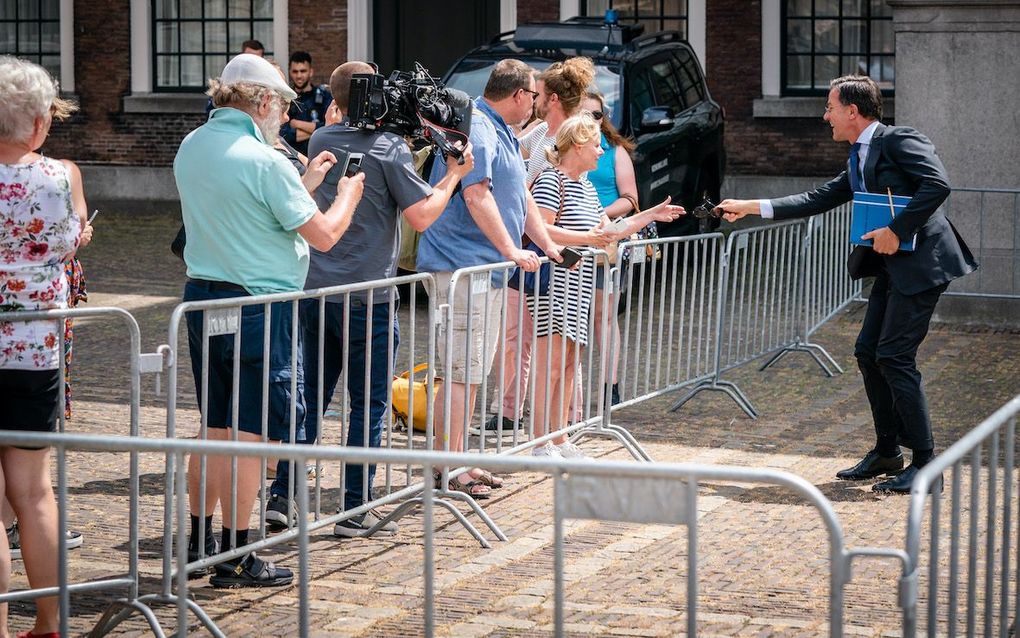Why death on demand is stumbling block for new government in the Netherlands
Three months after the elections, the Dutch Prime Minister Rutte has no prospect of a fourth cabinet. The investigator is having talks for a new coalition continually, but there is no breakthrough.

The formation of the 3rd Rutte government in 2017 took 225 days, so the 92 days since March 17th don’t have to be worrying. But to be honest, the formation in 2017 was the longest in history. Many cabinets, also after complex negotiations, stood within 100 days with the Queen or the King in front of the palace.
Currently, investigator Marriët Hamer is speaking with several party leaders, mainly Prime Minister Mark Rutte (liberal) and Foreign Minister Siegrid Kaag (social liberal). The Christian democratic CDA is still in shock after the loss at the election and has some internal problems. Last Saturday, the party lost another seat since the influential Dr Pieter Omtzigt chose to go independent.
D66 and ChristenUnie
The easiest option would be to continue the present coalition of the liberals (Rutte’s VVD), Christian-democrats (CDA), social-liberals (D66) and orthodox Christians (ChristenUnie). That coalition could have just enough support in the Tweede Kamer (77 of the 150 seats).
The problem is that the social-liberal D66 doesn’t want to continue with the ChristenUnie. The political ideals of the two are really opposite. D66 (with Foreign Minister Siegrid Kaag as leader) is very much pro-choice. The ChristenUnie (with former evangelist Gert-Jan Segers on front) is openly pro-life.
D66 did not propose the private member’s bill about “fulfilled life” to make the present coalition possible. An act as such would facilitate voluntary euthanasia for anyone above 75 years. The current law only makes euthanasia possible in case of “unbearable and hopeless suffering”.
At the end of the governmental term, MP Pia Dijkstra did introduce that bill about death on demand. Sooner or later, parliament will speak about it. The government will be asked then for an opinion.
Gert-Jan Segers has always said that an act about “fulfilled life” is too much to carry for his party. He would prefer to invest in older people’s lives, not in their death.
This doesn’t say that a continuation of the present coalition is not possible. The 3rd Rutte government was undoubtedly stable. For an alliance of four parties, that is not a small compliment to give.
Too many parties
In the past, coalitions of two parties were quite normal. But the number of parties in the Tweede Kamer is growing continuously. At the moment, there are 19 groups; many of them have just one or two representatives.
At the same time, the size of the traditional parties is shrinking. Rutte’s VVD is (with 34 seats) the largest party at the moment. Up to 1990, a party of that size would have been 3rd.
The growing number of parties has not brought an increasing number of groups with potential for government. Currently, there are five groups with experience in government: VVD, CDA, D66, ChristenUnie and the social democrats in the PvdA.
Apart from that, some parties might be ready to support a minority government in exchange for some influence. But that won’t be many. Most of the small groups have big demands, and they won’t drop them.
Mistrust in Mark Rutte
A huge problem is a mistrust in Prime Minister Mark Rutte that turned out to be there. Rutte is a person known for his smooth handling of complex cases. But after 11 years, many are finding him too smoothly. Several people who have worked with him closely don’t trust him anymore.
In early April, Gert-Jan Segers has even said that he doesn’t want to work in a coalition with Mark Rutte again, although there hasn’t been any open conflict between them. Other parties haven’t gone that far. But there is at least some metal fatigue around Mr Rutte.
No step taken yet
As investigator for the Tweede Kamer, Mrs Hamer has the uneasy task at least to point in a direction of a new coalition to be built. Three months after the elections, it appears so that no one step is taken yet to form a stable government. It is even not clear whether the several options have really been explored.
Therefore, it might be possible that the 2017 record of 225 days cabinet formation will soon be broken.
